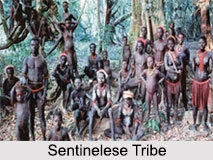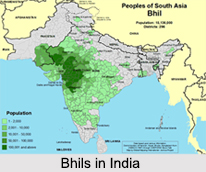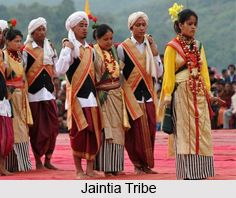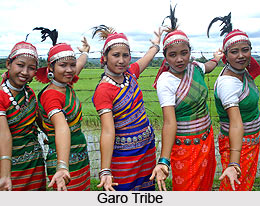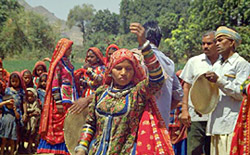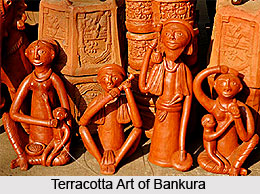 Art of terracotta includes making of pots and toys by skilled tribal artisans. Figurines are made out of terracotta by the potters for several occasions like fairs, festivals and for rituals. They are often used for brief ceremonial occasion and then thrown away or submerged in river or lakes. A few of the toys such as grinder, lamp stand or utensils of cooking are common in tribal as well as in non-tribal areas. Horses, bulls, elephants and birds are popular among the tribal terracotta art. The most important thing is the local tribal impact upon these items of terracotta which make them distinctive.
Art of terracotta includes making of pots and toys by skilled tribal artisans. Figurines are made out of terracotta by the potters for several occasions like fairs, festivals and for rituals. They are often used for brief ceremonial occasion and then thrown away or submerged in river or lakes. A few of the toys such as grinder, lamp stand or utensils of cooking are common in tribal as well as in non-tribal areas. Horses, bulls, elephants and birds are popular among the tribal terracotta art. The most important thing is the local tribal impact upon these items of terracotta which make them distinctive.
Among these terracotta products the bull and elephant with a rider are important and typical primitive toys of certain tribal areas. These are partly moulded and partly a hand made piece of their creativity. Some of these terracotta items are made for festivals. They are connected with mythological themes and used as native offerings. These bulls are primitive in style. Their mouths are broad, eyes and nostrils are small in size, ears are fan like. There are stripes on the back. Their faces are similar to horses. Some of them are coloured in deep red colour.
Some bulls made of terracotta are very decorative depending on the area. Mostly their heads and necks decoration was ornamented. The distinctive and creative quality of these bulls was their decoration with small balls which were pasted on them and thin stripes of which were marked with thin stick. The long thick tail is unique. The bold horns and ears are typical. These are greatly influenced by tribal artistic traditions. A few of the bulls however were without head and neck decorations.
For making these toys the fine clay of a pond is used. Here the technique is given with context to making of a bull. A solid formation of a bull is made through a mould and then the small ball-like eyes, head decoration, girdle in the neck and tail are added to it. The nostrils, mouth, ears and decorations of the head and neck, are marked with thick wire or thin stick. Then it is baked. Automatically it becomes deep ochre, darker in shade. Sometimes it is coloured with white lime or with red ochre colour but generally it is left as it is.
In some areas it is seen that the bull and elephants less ornamental and bold. They are tall and coloured with red and green stripes on white background. On elephants, there is seated one rider holding both the big ears. These toys are more in folk styles. Their tallness possesses a typical primitive effect.
In some villages on the top row and in the front row of the tiles of the tribal huts, there were made sitting birds or standing deer on each tile. The tiles arranged in a row seem as if birds or deer are sitting on each tile, in symmetry, in a row.
These are made on the tiles and through baking it becomes fixed on the tile. Human forms as a separate terracotta is not that common. The female figurines are found. There are two standing sculptures which are made of yellow clay with moulds.

















